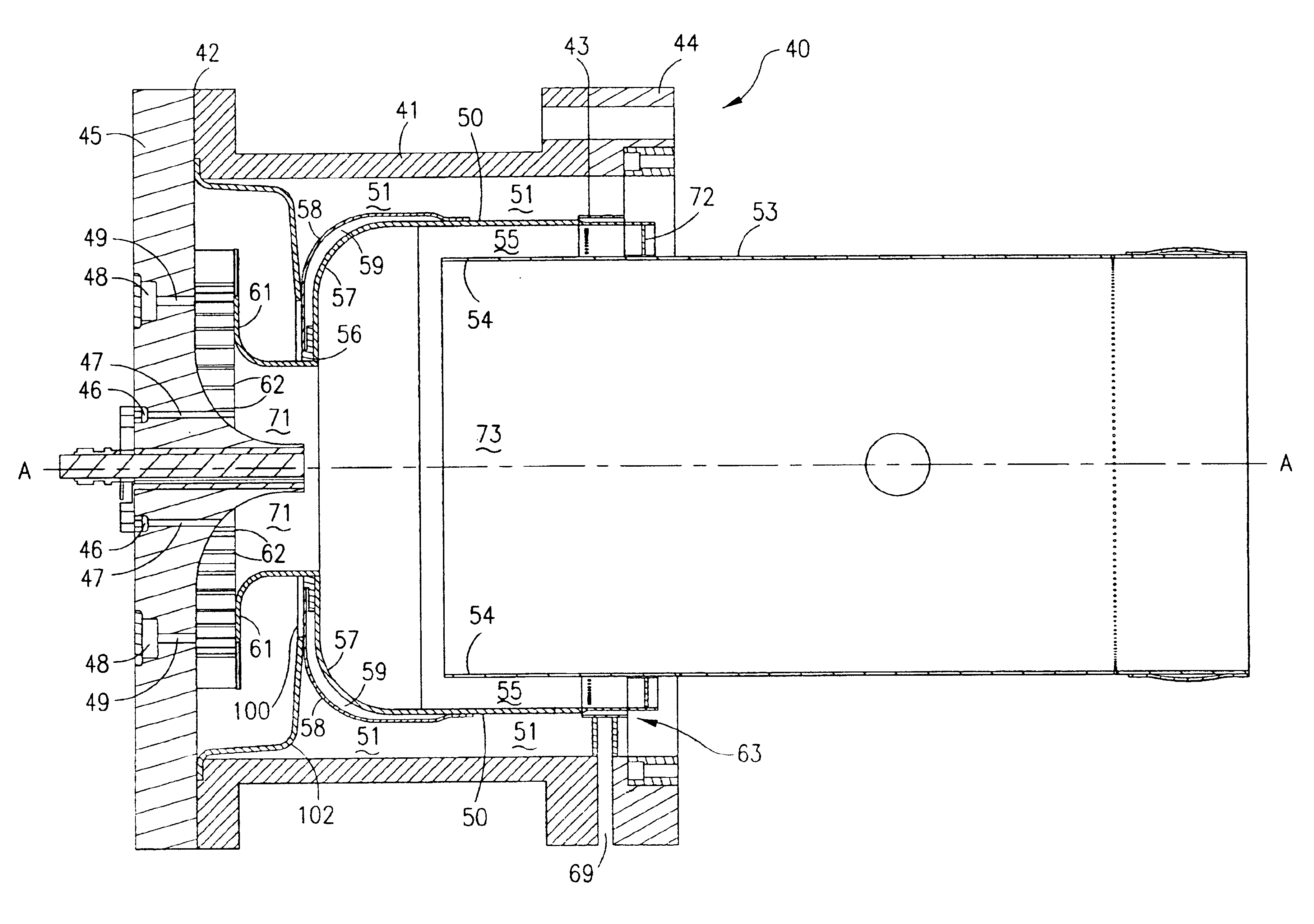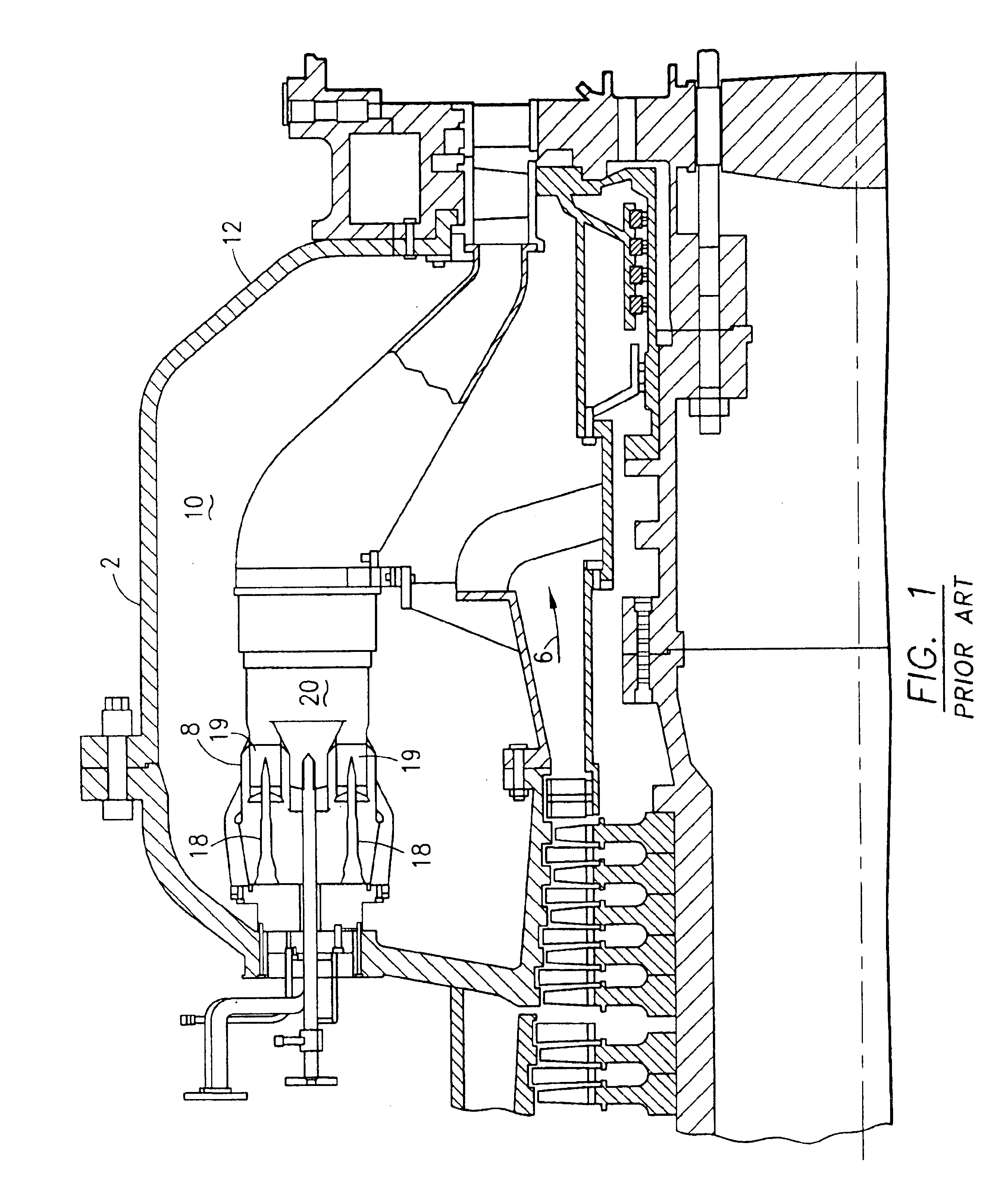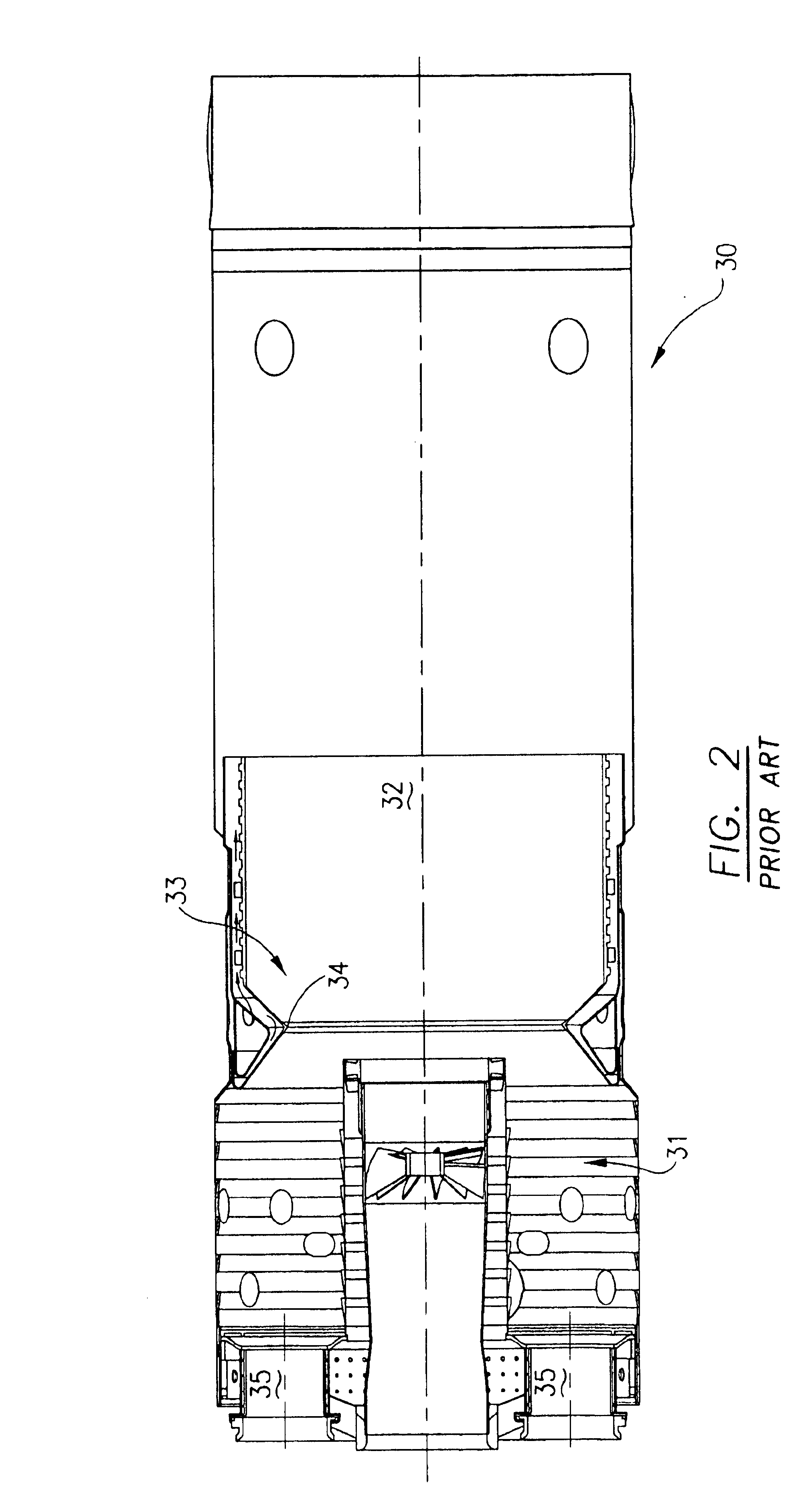Flamesheet combustor
a combustion system and flame sheet technology, applied in mechanical equipment, machines/engines, lighting and heating apparatus, etc., can solve the problems of preventing any improvement through altering the mixing length, reducing the load turndown, and high emissions of diffusion-type nozzles, so as to reduce polluting emissions, reduce load conditions, and reduce the effect of polluting emissions
- Summary
- Abstract
- Description
- Claims
- Application Information
AI Technical Summary
Benefits of technology
Problems solved by technology
Method used
Image
Examples
Embodiment Construction
[0021]The preferred embodiment of the present invention will now be described in detail with specific reference to FIGS. 3-8. Referring now to FIGS. 3 and 4, a gas turbine combustion system 40 of the present invention is shown. Combustion system 40 includes a casing 41 having a first end 42, a second end 43, and a center axis A—A. Casing 41, which is mounted to an engine through flange 44, is in fluid communication with compressed air from a compressor.
[0022]Referring now to FIGS. 4 and 5, an end cover 45 is fixed to casing first end 42, with end cover 45 having at least one fuel source in fluid communication with at least one set of injectors. In the preferred embodiment a first fuel source 46 is in fluid communication with a plurality of first injectors 47, where first injectors 47, comprising at least two injectors, are arranged in a first array radially outward of center axis A—A. Furthermore, the preferred embodiment of end cover 45 also contains a second fuel source 48 in flui...
PUM
 Login to View More
Login to View More Abstract
Description
Claims
Application Information
 Login to View More
Login to View More - R&D
- Intellectual Property
- Life Sciences
- Materials
- Tech Scout
- Unparalleled Data Quality
- Higher Quality Content
- 60% Fewer Hallucinations
Browse by: Latest US Patents, China's latest patents, Technical Efficacy Thesaurus, Application Domain, Technology Topic, Popular Technical Reports.
© 2025 PatSnap. All rights reserved.Legal|Privacy policy|Modern Slavery Act Transparency Statement|Sitemap|About US| Contact US: help@patsnap.com



